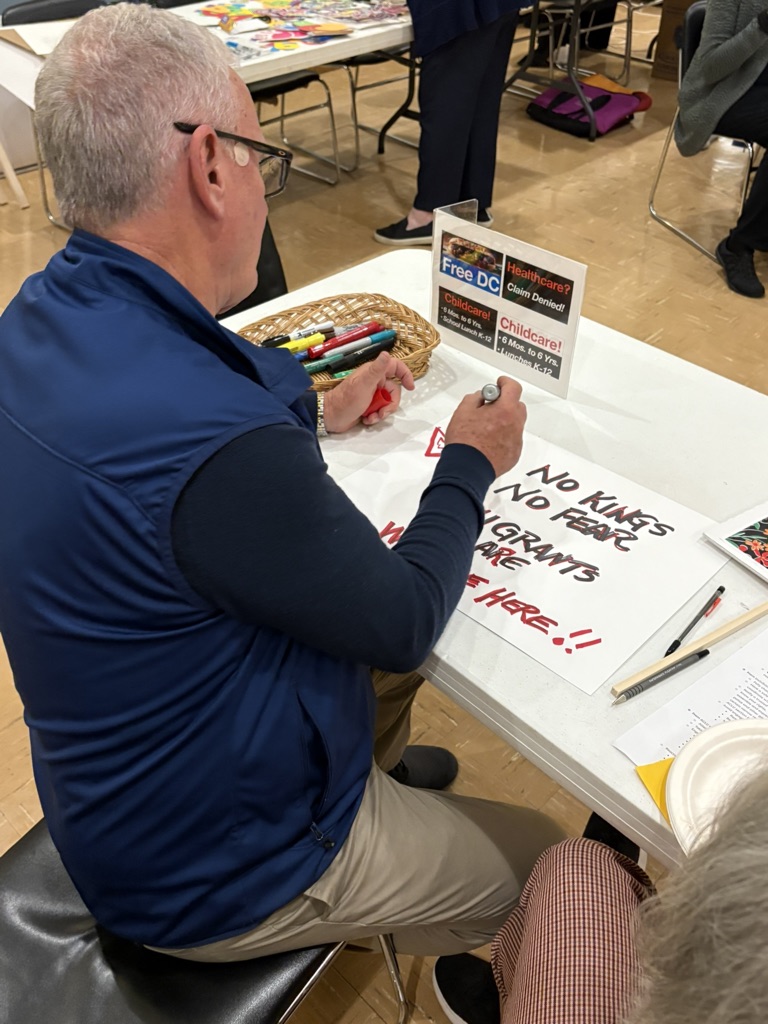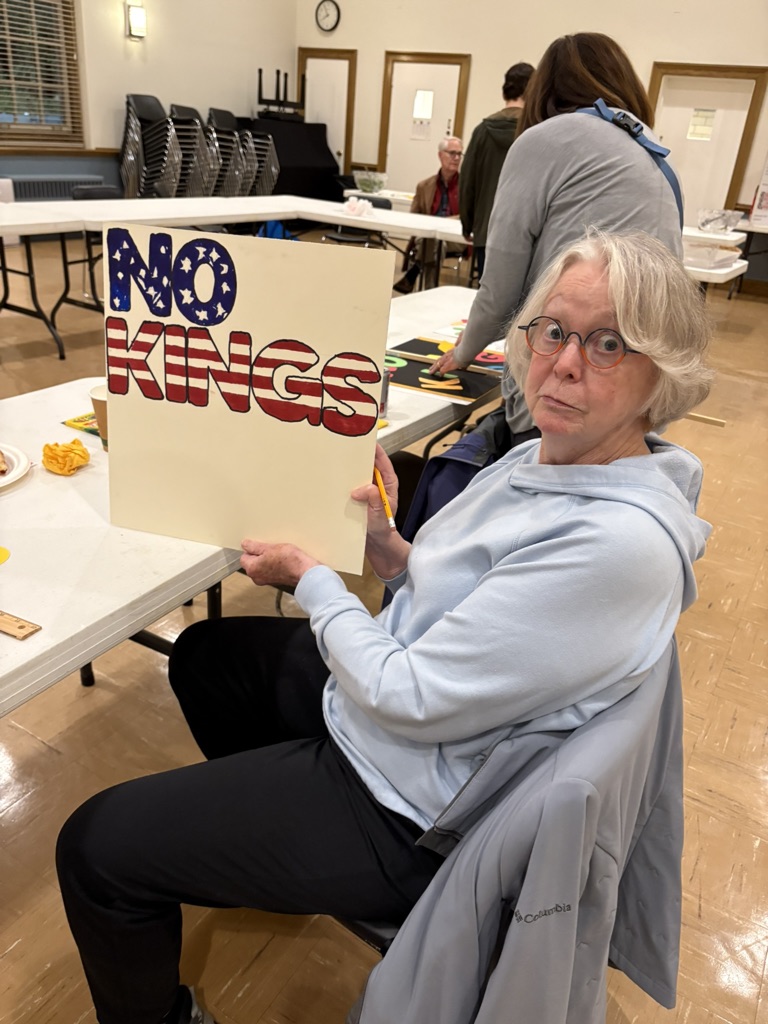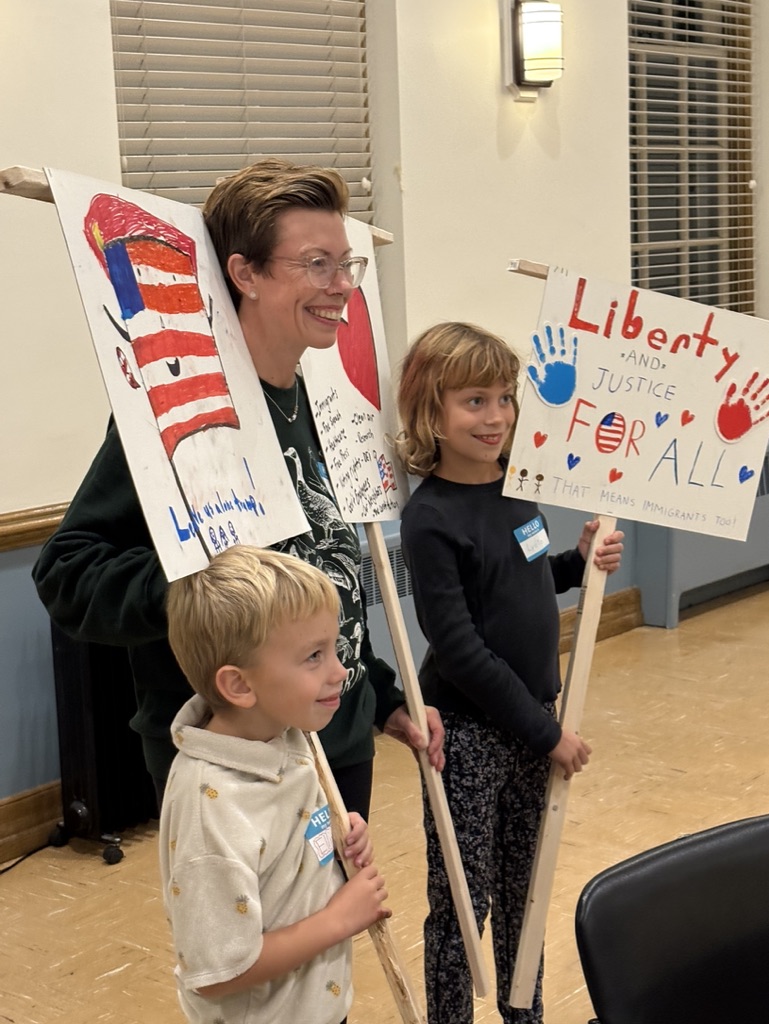Yesterday I spent several hours in two exercises with organizations founded on democratic principles. The first was virtual, watching the Annual Meeting of State Employees NC. The second was in person, a participatory exercise for a much larger political event this weekend.
The Coop’s Annual Meeting
The theme. I believe, of the two-hour credit union event was The SECU Difference. The first speaker was the parliamentarian who announced authoritatively that the meeting would be under the latest version of Robert’s Rules of Order.
This was followed by the Chairman’s speech, a SECU foundation report and video and CEO Leigh Brady’s summary of the credit union’s performance for the fiscal year ending June 30. All presentations were shown in a single, stationary camera frame, with no views of the audience or other members on stage. Brady’s speech used a split screen when she showing slides to highlight numbers and goals.
The nominating committee chair reported that the number of candidates approved for the members’ vote just equaled the number of vacancies. Therefore no action by members was necessary. This prior board selection was approved by acclamation in contrast to the previous two years where there had been contests for all open board positions.
The President’s Q&A
The final hour was CEO Brady answering questions submitted in advance and read by an employee. Up to this point every speech and action was fully scripted and presented as done events with no member input.
So one would hope the members’ queries might be a bit more spontaneous and informative about The SECU Difference. In short an opportunity for a CEO to show her “chops” that is the grasp of her role and understanding of issues on members’ minds.
And the member concerns were plentiful and seemed candid even as grouped into common issues.
- What is the credit union doing to help members feeling financial pressure?
- Why are you so hard on loan aoolications?
- Any changes planned to the Field of Membership?
- Will SECU seek mergers?
- When will small business loans be available?
- Will fixed rate mortgages be offered, not just variable?
- What is her outlook for interest rates?
- How will the changes at the federal level affect credit unions?
- When will the problems with the outsourcing vendor managing excrow accounts be fixed? etc.
The questions expressed real member concerns and experiences. However every question received a written response of three to four sentences, prepared in advance, with little insight or empathy expressed about the topic. Most replies referenced a process the member should follow if they had a problem, eg. contact your . . .
My take away: this was a 100% scripted event to conduct a required legal activity with no substance or owber interaction wanted. And especially no live member involvement as in recent meetings.
The emerging SECU Difference is that the credit union is striving to be just like every other large credit union in both performance and example. Some of the CEO’s accomplishments include the replacement of over 1,000 ATMs, the installation of digital signage n the branches and the introduction of two new credit card options: a reward and a cash- back choice. There will be a core conversion but that will take at least three years to complete.
The prior offerings that SECU created within the credit union structure including the life insurance company, the investment broker license, the real estate management company and the trust services were mentioned, but no performance details provided. It is unclear if SECU still offers its ATMs without surcharges for non-members. It has stopped the income tax service and ended the operational support ties with both Latino and Civic credit unions.
SECU’s financial performance is stable and it reiterated its commitment to operate branches in all 100 NC counties and focus the foundation’s resources on non profits throughout the state. So the credit union may have refocused on its roots versus more expansive ambitions contemplated several years earlier.
What is different now is that SECU sounds and looks like virtually every other large credit union. That’s neither good nor bad, unless you believe focusing on creating member value options not readily available elsewhere was the purpose of a coop.
North Carolina is one of the most attractive states for new bank investment and branch expansion (after Texas and Florida). Will not having a strategic difference, other than a tax exemption, be a sufficient strategy? Time will tell.
Preparing to Participate in Democracy
The second two-hour event was a group meeting to discuss how individuals can become more engaged in influencing current political issues. It was followed by a sign-making, pizza-fueled party at a local church’s social hall. About 25 people gathered to learn and prepared to participate in the coming Saturday’s No Kings rallies around the country.
Seeing the Difference in Democratic Practice.
Our Legacies
What will our children and their children inherit from our democratic organizations’ efforts today?







We live in odd times.
hashtag#CEOs, I know you’ve had frustrating encounters with auditors and regulators. They can feel burdensome, even annoying. But this latest move from National Credit Union Administration (NCUA) isn’t a win for the reduction of “regulatory burden”—it’s something far more concerning.
Although the headlines highlight the elimination of reputation risk, please read further. In addition to eliminating reputation risk as a rating, NCUA has discontinued assigning ratings to all seven risk categories:
• Credit
• Interest Rate
• Liquidity
• Transaction
• Compliance
• Reputation
• Strategic
Imagine someone removing all the smoke detectors from your building and telling you, “Don’t worry, we’ll let you know when we see fire.”
The purpose of these risk ratings was never busywork. At the aggregate level, they provided field offices, regions, and national leadership with a top-down view of where risk was accumulating. From a staffing standpoint, if a credit union’s liquidity risk was rated high, it signaled the need for additional expertise at the next examination.
Examiners and ERM professionals assess each category based on quantity, direction, and the quality of risk management. The point was never to penalize higher-risk profiles. It was to ensure that if you accepted a higher risk, your management practices were robust enough to handle it.
America’s Credit Unions, NASCUS, and American Association of Credit Union Leagues
How is this a win for the members and the safety and soundness of credit unions? Why do we only hear about tax status, and none of these moves requested are discussed with the same intensity?
A couple of foot notes: NCUA Credit Risk Webinar
On July 15, 2025, in an NCUA (https://lnkd.in/ednAJjCE) credit risk webinar, an examiner (Min 13:49) discussed the benefits of key concepts like risk appetite, risk tolerance, and risk capacity. Those are excellent tools for boards and executives. They’re the backbone of modern ERM.
But here’s the contradiction: NCUA is now saying those concepts are helpful for credit unions to adopt, while simultaneously discontinuing examiner use of risk ratings for the seven categories (credit, liquidity, interest rate, compliance, transaction, reputation, and strategic).
National Credit Union Administration:
Additional Actions Needed to Strengthen Oversight
On Sept. 23, 2021, the Government Accountability Office issued a report stating NCUA has opportunities to improve its use of supervisory information to address deteriorating credit unions. By more fully leveraging the additional predictive value of the CAMEL component ratings, NCUA could take earlier, targeted supervisory action to help address credit union risks and mitigate losses to the NCUSIF. As of today, one of the recommendations is still open, and another is partially addressed.
END
As Hauptman tries to burnish his reputation with the administration’s anti-government ideology, the dangers of a single political point of view determining regulatory priorities in a so-called independent agency becomes clear.
This press release is not about ensuring the safety and soundness of members’ funds or enhancing the cooperative systems critical roles. It is simply posturing for another assignment in an administration bent on governmental disruption.
The financial and institutional integrity of the cooperative system requires a competent, active regulatory oversight. Institutions that manage financial assets for others are especially vulnerable to self-dealing. That is why almost every form of money lending, transfer, safe-keeping and advice is subject to governmental licensing and oversight.
Without effective supervision not only will credit unions continue to be lost, the playing field will become crowded with internal and external predators trying to cash in on the abdication of, and disrespect for, regulatory oversight.